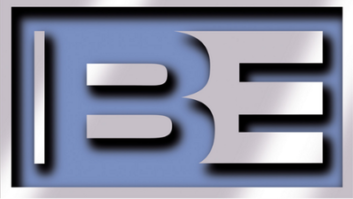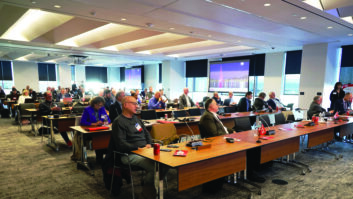(click thumbnail)Joe MaguireQ. The Empire State Building is an exhibitor at NAB for the first time. Why, and why now?
A. The Empire State Building is the leader in the broadcasting industry in the pre-eminent media market. Forty-four radio and television stations and over 200 other transmitters take advantage of its central location, superior support and designated and secure facilities, and of course its height with both analog, digital, microwave and shortwave signals. NAB is the place for us to be to tell our story and offer our services.
Q. Everyone knows the building; and most of our readers are familiar with its history as a key broadcast platform. What message do you want to convey to attendees?
A. ESB is under new management, which has spent the past year listening to and addressing broadcasters’ needs and concerns. A part of our over $500 million comprehensive upgrades and renovations include a state-of-the-art, 24/7 RF monitoring system, additional electric capacity, and physical and operational upgrades to broadcaster areas of the building. We provide quality infrastructure and services. We’re here at NAB, and will continue to be present, to spread the word about our great facility, and to keep abreast of the latest industry trends.
Q. Who are your current broadcast tenants? How many more can you accommodate?
A. All of the major radio and television stations in the New York Metro area are ESB tenants, including 19 FM stations, 12 NTSC TVs, 11 DTVs and two LPTVs on the air. ESB also has over 200 antennas and provides a variety of point-to-point radio and data communications services to utility companies, telecommunications providers and public safety agencies. Antenna locations at lower levels are available for cellular and broadband users.
Q. Is your presence at NAB an indication of increased competition for vertical real estate in the city?
(click thumbnail)A. No, we are here to mix and mingle and be a more informed participant in the broadcast industry, listen to what is new, and make sure our offering is always an industry, and the market, leader. We are constantly upgrading our offerings to support new technology to stay competitive in the marketplace. For instance, we have the facilities to accommodate wireless media on our lower-level setbacks.
Q. How has HD Radio affected your facility or tenants? How has DTV?
A. Our facility has been able to be responsive and accommodate our tenants’ needs. HD Radio tenants mostly combine analog and digital in their transmitter spaces, using the same antennas. We have accommodated DTV with interim channels and different antennas. We are working with industry leaders towards additional DTV changes in February 2009. After all the analog antennas have been removed, the Empire State Building will execute on a tower clean-up plan which will free up more space on our tower for the broadcast community.
Q. What are the most common concerns you hear from tenants?
A. The good news is that we hear more about benefits than concerns from our tenants. When new management took over, we learned that express elevator access to the broadcast areas for engineers was important, so we are reprogramming our elevators to provide it.
Q. What’s the most exciting or unusual project you’ve been involved with lately?
A. I feel fortunate to be at the Empire State Building at this time. I’ve been in New York broadcasting since I was a teenager, and to be at this landmark transmission site for the transition of both radio and television from analog to digital is both exciting and incredibly rewarding. We are confident in our work and that the Empire State Building is the best broadcast platform available in our market.
Q. Who owns the company?
A. The Empire State Building is owned by the Empire State Building Company, L.L.C., under the supervision of Peter and Anthony Malkin of Wien & Malkin, and has approximately 400 employees.














